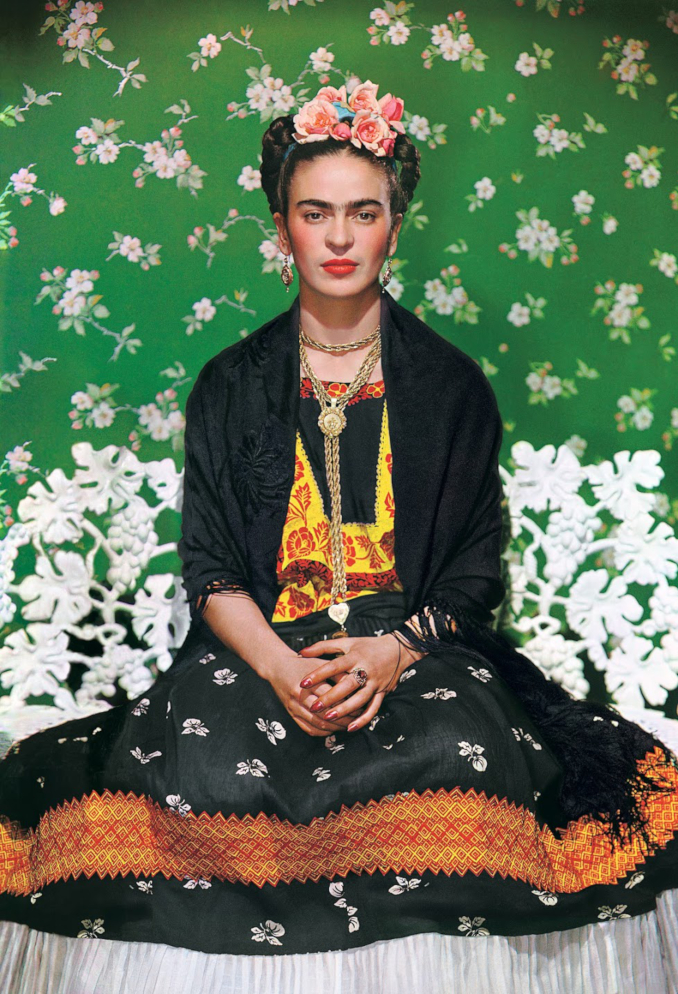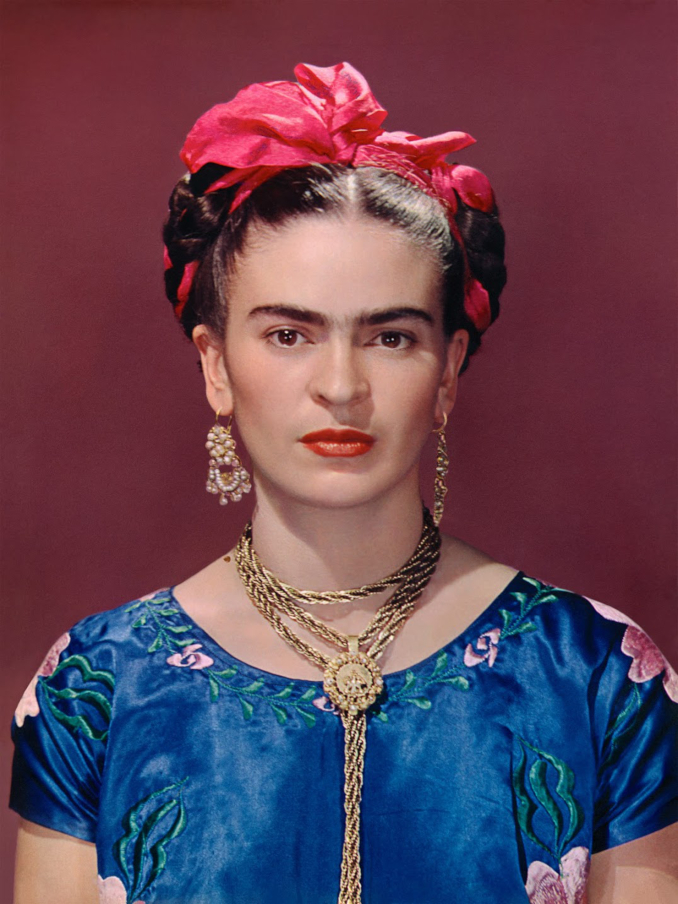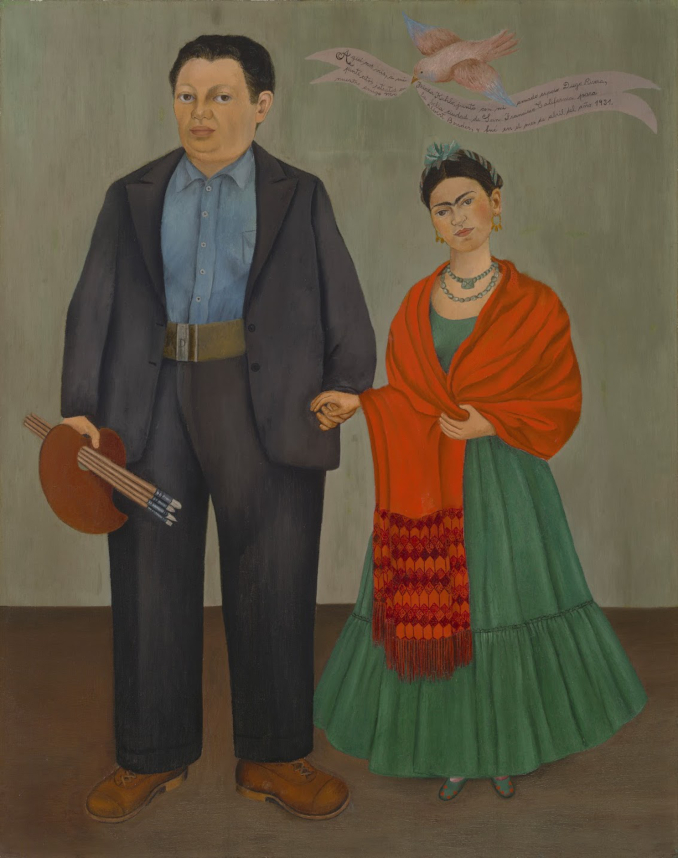Food for the Soul: Frida Kahlo – Women Artists Series 3
An exhibition was planned in San Francisco to showcase Frida Kahlo’s personal life through personal mementos locked up for 50 years in Casa Azul.
By Nina Heyn — Your Culture Scout
Worldwide, we are all hunkering down at home to wait out the pandemic. The same as cinema-going and dining with friends at restaurants, museum-going is also an intellectual casualty of this isolation. To ease that, we are virtually bringing you to a museum—this time to a new exhibition that would have opened in a week but will now have to wait out the crisis the same way we are.
School kids learn about Frida Kahlo. Her colorful self-portraits adorn tote bags, cosmetics and clothing. There has even been an award-winning movie about her (starring Salma Hayek as Kahlo), as well as several theater plays, and countless art books. It is difficult to separate Frida, the popular icon, from Frida, a genuine artist. She has been described and analyzed by art critics, feminist writers, art historians, and reduced in school essays to an example of female contribution in art.
Several years after Kahlo’s death in 1954, Diego Riviera gave her Coyacán home called La Casa Azul (Blue House) to the people of Mexico. La Casa Azul became the Museo Frida Kahlo, preserving Kahlo’s memory. However, some of her personal belongings and mementos were kept in storage for 50 years and were only uncovered in 2004.
An exhibition entitled Frida Kahlo: Appearances Can be Deceiving is aimed at bringing new insights into Kahlo’s personal and artistic biography using these recently discovered artifacts—including colorful folk dresses, jewelry, and even her orthopedic corsets. The exhibition recently traveled from the Brooklyn Museum to the West Coast for a display at the de Young Museum in San Francisco.

Nickolas Murray “Frida on Bench” Nickolas Murry Photo Archives. Image courtesy of the Fine Arts Museums of San Francisco
Even though Frida Kahlo’s paintings have a deceiving look of primitive folk art, Frida the artist is actually the result of several sophisticated influences and training. She was the daughter of a photographer who emigrated to Mexico from his native Germany in 1891. He was her first teacher of visual composition and sensitivity. She also received some science training at the prestigious National Preparatory School, not to mention the enormous influence of her much older and more famous husband Diego Rivera—the eminent painter and muralist, who together with Orozco and Siqueiros, were the three most prominent artists of Mexico’s 20th-century art. The Rivera-Kahlo household was an artistic cauldron where everyone mingled and exchanged ideas: artists, politicians (including the anarchist Trotsky with whom Kahlo had an affair and Siqueiros tried to assassinate), actors (including Paulette Goddard with whom Rivera had an affair), poets, writers, and composers. It was, therefore, a deliberate artistic decision when early in her artistic career Kahlo pivoted from her Modigliani-style paintings toward surrealist and “folk art” style canvases.

Frida Kahlo. Self-Portrait Dedicated to Dr. Leo Eloesser, 1940. Oil on Masonite. Private Collection © 2020 Banco de México Diego Rivera Frida Kahlo Museums Trust, Mexico, D.F. / Artists Rights Society (ARS), New York
Kahlo was inspired by Mexican votive paintings called retablos (she had a collection of 2000 of them in her house), the outlandish and imaginative decorations for the Day of the Dead and other popular street festivals, Aztec figurines, and the traditional Tehuana dresses with bright shawls and large hair bows that she started to wear instead of her flapper-style dresses with Chanel collars.

Nickolas Murray. Frida in Blue Dress. Nickolas Murry Photo Archives. Image courtesy of the Fine Arts Museums of San Francisco
These days, many female artists create their look to match their artistic persona. If you look at photos of Yoko Ono, Yayoi Kusama, Peggy Guggenheim, Iris Applebaum and many others, they all chose to augment their public personas with eccentric glasses, unusual clothing or hairdos, or garish accessories. The concept of a holistic artist who lives, wears and expresses his art 24/7 is a very popular concept, embraced by Andy Warhol, Salvador Dali and even Picasso. Kahlo was definitely out there as an artist whose entire life was transformed into art. She included in her paintings everything that affected her life—her incessant suffering (she endured countless surgeries and debilitating treatments on her back and foot), her immersion in the Mexican romantic revival (a movement started in the early 20th century that focused on going back to national roots in view of the colonial past), and her equally passionate fascination with early Communism (a huge intellectual craze in the 1930s all over the world). This very modern approach to art as a way of life is what fascinates us in Kahlo, and this is what the exhibition brings into focus.
In 1930, Kahlo made her first trip abroad to “Gringolandia” (as she called the U.S.). In San Francisco, she completed several paintings, including a double portrait of her and Rivera where is she is wearing a folk dress that would soon become her trademark costume.

Frida Kahlo. Frieda and Diego Rivera, 1931. Oil on canvas. Collection SFMOMA, Albert M. Bender Collection, gift of Albert M. Bender © Banco de Mexico Diego Rivera and Frida Kahlo Museums Trust, Mexico, D.F. / Artist Rights Society (ARS), New York, photo: Ben Blackwell
“Kahlo used her appearance to express her Mexicanidad, her identity as a Mexican woman at a time when her country was undergoing great political and social change,” explains Hillary Olcott, de Young’ s Associate Curator of the Arts of Africa, Oceania, and the Americas. “This became especially important when she left Mexico, and traveled to San Francisco for the first time. She created the double portrait here in the city, which is also where it was first shown outside of Mexico.”
The exhibition also displays about 20 paintings from various periods of Kahlo’s life. Over 50 years after her passing, these are her real legacy as an artist, and they are worth looking at them for their aesthetic value alone rather than just as popular culture icons. For many decades after Kahlo’s death, however, she was not much recognized by the art world outside Mexico. It was only in the 1980s that interest in her grew, more as an eccentric female artist with a tragic biography rather than a careful creator of artistic output. It seems that only the perspective of time can make us understand Kahlo as an early multimedia artist whose paintings, dresses and personal collections all count as one continuous stream of creativity.
The exhibition at the de Young Museum in San Francisco was scheduled to open on March 21 till July 26, 2020. The museum had to close temporarily. Since nobody can visit the exhibition now, we are offering this virtual peek at the exhibition and Frida Kahlo’s artistic legacy.
